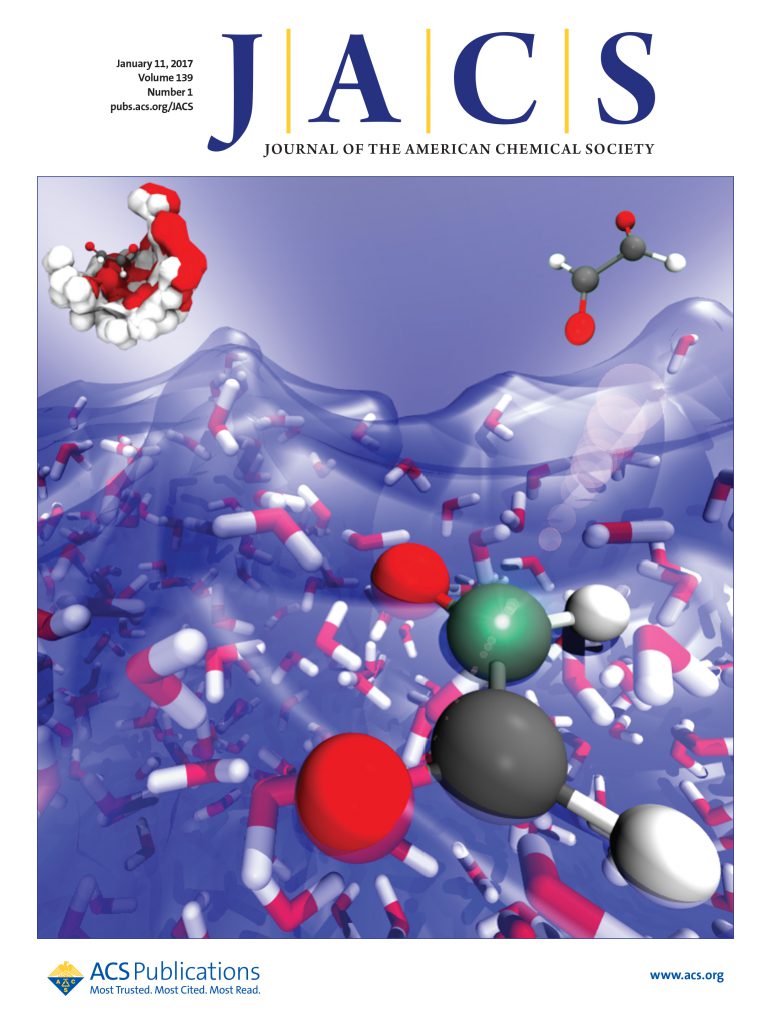Electrochemical Direct Hydroxylation of Benzylic C–H Bonds Assisted by HFIP
IF 14.4
1区 化学
Q1 CHEMISTRY, MULTIDISCIPLINARY
引用次数: 0
Abstract
Benzylic alcohols represent a privileged structural motif that is ubiquitous in bioactive natural products and pharmaceutical agents. Selective oxidative hydroxylation of benzylic C–H bonds is an efficient, atom-economical, and environmentally friendly methodology. However, the inherent obstacle of alcohol overoxidation still poses a significant challenge. Herein, we report an HFIP-assisted electrochemical oxidative hydroxylation of benzylic C–H bonds, utilizing green, benign H2O as the hydroxyl source. This method exhibits remarkable compatibility with a broad range of substrates, including electron-rich, electron-neutral, and electron-deficient alkylarenes, alkylarenes bearing primary, secondary, and tertiary benzylic C–H bonds, and even pharmaceutical molecules. Notably, the method enables efficient synthesis of 18O-labeled biorelevant derivatives, highlighting its utility for isotopic-labeling studies. Furthermore, this electrochemical protocol has been shown to be readily scalable (up to 10 g under 200 mA/cm2), thus demonstrating its promising potential for industrial application. Mechanistic studies have revealed that benzylic alcohols can be stabilized by HFIP via hydrogen-bonding interactions, thereby reducing the electron density of the aromatic rings, subsequently deactivating its further oxidation and improving the selectivity of the reaction.

HFIP辅助下苯基C-H键的电化学直接羟基化
苯基醇是一种特殊的结构基序,在生物活性天然产物和药物制剂中无处不在。苯基C-H键的选择性氧化羟基化是一种高效、原子经济和环境友好的方法。然而,酒精过度氧化的固有障碍仍然构成重大挑战。在这里,我们报道了hfip辅助的苯基C-H键的电化学氧化羟基化,利用绿色,良性的水作为羟基源。该方法与广泛的底物具有显著的兼容性,包括富电子、电子中性和缺电子的烷基芳烯,含伯、仲、叔苯基C-H键的烷基芳烯,甚至药物分子。值得注意的是,该方法能够有效地合成18o标记的生物相关衍生物,突出了其在同位素标记研究中的实用性。此外,该电化学方案已被证明易于扩展(在200 mA/cm2下高达10 g),从而显示出其在工业应用方面的巨大潜力。机理研究表明,HFIP可以通过氢键相互作用稳定苯基醇,从而降低芳香环的电子密度,从而使其进一步氧化失活,提高反应的选择性。
本文章由计算机程序翻译,如有差异,请以英文原文为准。
求助全文
约1分钟内获得全文
求助全文
来源期刊
CiteScore
24.40
自引率
6.00%
发文量
2398
审稿时长
1.6 months
期刊介绍:
The flagship journal of the American Chemical Society, known as the Journal of the American Chemical Society (JACS), has been a prestigious publication since its establishment in 1879. It holds a preeminent position in the field of chemistry and related interdisciplinary sciences. JACS is committed to disseminating cutting-edge research papers, covering a wide range of topics, and encompasses approximately 19,000 pages of Articles, Communications, and Perspectives annually. With a weekly publication frequency, JACS plays a vital role in advancing the field of chemistry by providing essential research.

 求助内容:
求助内容: 应助结果提醒方式:
应助结果提醒方式:


